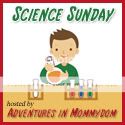How we read to children is as important as how much we read to children.
This statement is why I started using the Dialogic Reading strategy in my preschool classroom.
Children learn about books and reading when they are actively involved in the process. This is why researchers developed a method of reading called Dialogic Reading. In dialogic reading, the adults help children become the tellers of the story.
There are three main techniques that you use when reading with the children.
• Asking “what’ questions
• Asking open ended questions
• Expanding on what the children say
When using these techniques it encourages the children to talk more and give descriptions about the story and what they see in the pictures.
Since I have been using the dialogical reading method, the children in my classroom have had a greater gain in oral language skills and vocabulary.
Here is what I do to plan a dialogic reading lesson in my class.
• First I read the story from state to finish with the children with little interruptions or interpretation of the story. This gives the children an understanding of the story.
• Next I complete a reading lesson plan that I will use when I read the story to the children the next time around.
Dialogic Reading Lesson Planner
Name of Book:________________
Completion: Child completes a sentence in the story with a word or phrase.
Recall: Child either is asked to recall parts of the story before a repeat reading, during a reading (before turning the page) or after the story has been read.
Open-Ended questions: Child has the freedom to answer questions about the story in a variety of ways.
W (who, what where, when, why/how?):
Distancing: Teacher will ask questions and look for responses that enable the children to relate text to their own life experiences.


































